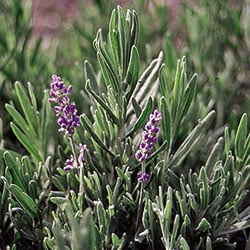Plants that draw pollinators to your garden
/Plants for pollinators
According to the USDA, animals pollinate about 75% of crop plants grown worldwide for food, fiber, beverages, condiments, spices, and medicines (http://www.plants.usda.gov/pollinators/Native_Pollinators.pdf). A healthy garden needs the assistance of our insect friends. Here are a few plants, available from Seed Savers Exchange, that will attract these pollinators to the garden.
Hyssop was used as early as the 7th century to improve the smell of kitchens and hospitals. The leaves can be used to flavor salads, soups, and liqueurs, while the essential oil is used in perfumes. The 18-24 inch perennial plants attract bees, butterflies, and hummingbirds.
Despite the name, this flowering herb is actually native to the Western Mediterranean. The foliage is grey-green while the flowers are a spiky violet-blue. The aromatic fragrance and aromatic oils are used to promote relaxation. This perennial grows 12-20 inches tall.
This South American native was introduced to England around 1725. The stiff stems have dark green leaves and support numerous purple flowers up to and even after the first frost. They thrive in warm, dry soil and are very easy to grow. It is a tender perennial that is usually grown as an annual and grow 3-4 feet tall.
Years ago, refined ladies looked for this 6-9 foot tall flower rather than ask where the outhouse was located. This self-seeding biennial has white, pink, magenta, and burgundy blooms. The plant blooms in the second year in the North or the first year in more moderate climates.
As the name indicates, this flower attracts bees to the garden. The subtle lavender-blue flowers have curved spikes and the plant can be used as an annual cover crop. 12-24 inches tall.
Seed Savers Exchange is a non-profit organization located in Decorah, Iowa, with a mission to conserve and promote America's culturally diverse but endangered garden and food crop heritage for future generations by collecting, growing, and sharing heirloom seeds and plants.



















